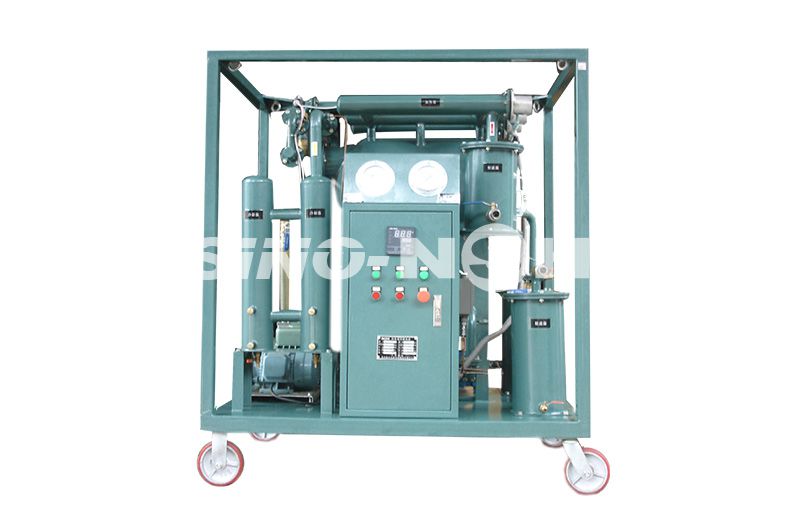Turbine oil can be purified through several methods to maintain its performance and extend its operational life. The common methods of purifying turbine oil include:
1. Filtration
- Purpose: To remove solid contaminants such as dust, dirt, and wear particles.
- Types:
- Gravity Filtration: A simple method where the oil passes through filters that capture large particles.
- Pressure Filtration: Oil is forced through filters under pressure, which is more effective for removing smaller contaminants.
- Vacuum Filtration: Involves using a vacuum to pull oil through filters, ensuring fine particles are removed.
2. Centrifugation
- Purpose: To remove solid particles, water, and other contaminants by utilizing centrifugal force.
- Process: The oil is spun at high speeds in a centrifuge, where denser particles are forced to the outer edges and separated from the oil.
3. Water Separation
- Purpose: To remove dissolved or free water that can degrade oil quality.
- Methods:
- Coalescers: These remove water by allowing small water droplets to combine into larger droplets that can be easily separated.
- Demulsifiers: Chemical additives that help break the emulsion of water in oil, making it easier to separate.
4. Dehydration
- Purpose: To remove free water from turbine oil.
- Methods:
- Vacuum Dehydration: Uses reduced pressure to evaporate water from the oil.
- Heat Dehydration: Heats the oil to help water evaporate, but is typically used with caution to avoid overheating the oil.
5. Chemical Purification
- Purpose: To remove contaminants that can’t be physically filtered, such as acids, oxidation products, and impurities.
- Process: Chemical additives are introduced to neutralize or break down contaminants, which are then removed through filtration or settling.
6. Activated Carbon Adsorption
- Purpose: To remove dissolved organic impurities and contaminants like sulfur and nitrogen compounds.
- Process: The oil is passed over activated carbon, which adsorbs harmful substances from the oil.
7. Ion Exchange
- Purpose: To remove specific dissolved ions (e.g., metals or acidic contaminants).
- Process: Oil is passed through ion-exchange resins that selectively capture ions, improving the oil’s purity.
8. Thermal Treatment
- Purpose: To remove dissolved gases and other impurities.
- Method: Oil is heated to break down unwanted compounds or to drive off dissolved gases, though this method needs to be controlled to avoid thermal degradation of the oil.
9. Electrostatic Separation
- Purpose: To separate water from oil using electric fields.
- Process: A high-voltage electrostatic field is applied to the oil, helping to separate water droplets from the oil.
10. Membrane Filtration
- Purpose: To remove fine particulates, water, and other contaminants.
- Method: Oil is passed through membrane filters that allow only pure oil to pass through, leaving contaminants behind.

Each of these methods can be used individually or in combination, depending on the level and types of contaminants present in the turbine oil. The choice of method largely depends on the specific requirements of the turbine system and the contaminants to be removed.

